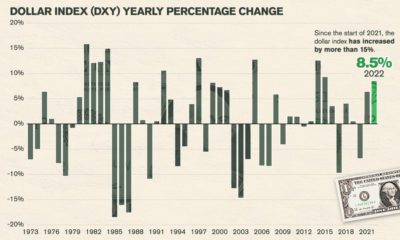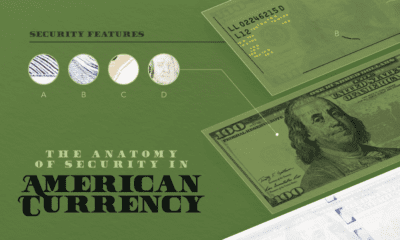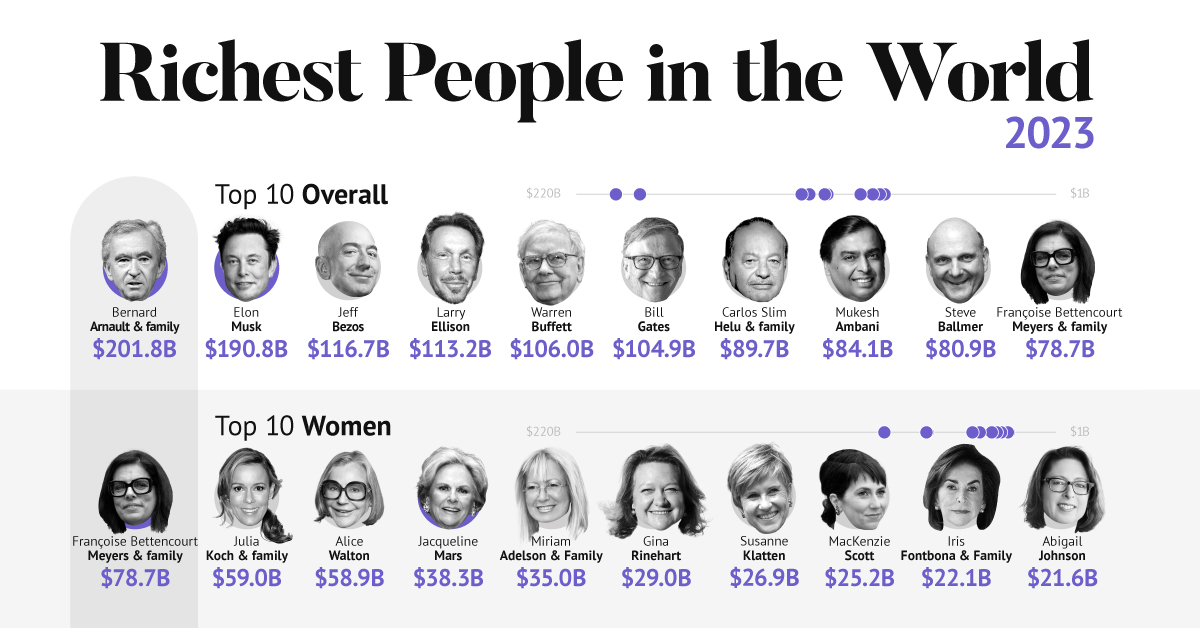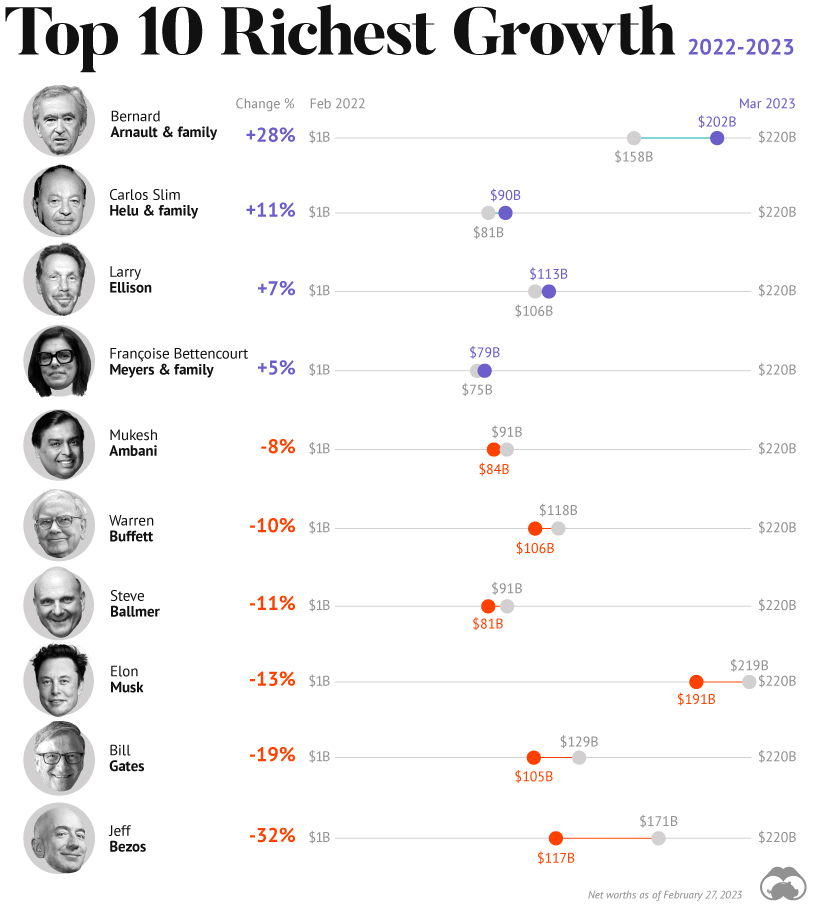Life and Times During the Great Depression
The Money Project is an ongoing collaboration between Visual Capitalist and Texas Precious Metals that seeks to use intuitive visualizations to explore the origins, nature, and use of money. The economy of the United States was destroyed almost overnight. More than 5,000 banks collapsed, and there were 12 million people out of work in America as factories, banks, and other shops closed. Many reasons have been supplied by the different economic camps for the cause of the Great Depression, which we reviewed in the first part of this series. Regardless of the causes, the combination of deflationary pressures and a collapsing economy created one of the most desperate and miserable eras of American history. The resulting aftermath was so bad, that almost every future Central Bank policy would be designed primarily to combat such deflation.
The Deflationary Spiral
After the stock crash, money and consumer confidence was hard to find. Instead of spending money on new things, people hoarded their cash. Fewer dollars spent meant more drops in demand and prices, which led to defaults, bankruptcies, and layoffs. As a result of this spiral, the prices for many food items in the U.S. fell by nearly 50% from their pre-WW1 levels. The price of butter went from pre-crisis levels of $0.21 to $0.13 per pound in 1932. Wool had a drop from $0.24 to $0.10 per pound, and most other goods followed the same price trajectory.
The Effects
Here’s how “real value” is affected in a deflationary environment: Money Real value increases: cash is king and gains in real value. Assets (stocks, real estate) Real value decreases as prices fall. Debt Debtors owe more in real terms Interest Rates Real interest rates (nominal rates minus inflation) can rise as inflation is negative, causing unwanted tightening.
From Bad to Worse
The Great Depression lasted from 1929 to 1939, which was unprecedented in length for modern history. To this day, economists disagree on why the Depression lasted so long. Here’s some of their explanations: The New Deal was not enough Looking back on The Great Depression, John Maynard Keynes believed that monetary policy could only go so far. The Central Bank could not ultimately push banks to lend, and therefore demand had to be created through fiscal policy. Keynes advocated massive deficit spending to offset markets’ failure to recover. Keynesians such as Paul Krugman believe that Franklin D. Roosevelt’s economic policies through The New Deal were too cautious. “You can’t push on a string.” – Keynes The New Deal made things worse Some economists believe the New Deal had a negative net effect on the recovery. The National Recovery Administration (NRA) is a primary subject of this criticism. Established in 1933, the goal of the NRA was to lift wages. To do this, it got industry leaders to meet and establish minimum prices and wages for workers. Cole and Ohanian claim that this essentially created cartels that destroyed economic competition. They calculate that this, along with the aftermath of these policies, accounted for 60% of the weak recovery. Lastly, one other charge leveled at Roosevelt by his critics is that the sprawling policies from the New Deal ultimately created uncertainty for business leaders, leading to less investment. This lengthened the recovery. “[The] abandonment of [Roosevelt’s] policies coincided with the strong economic recovery of the 1940s.” – Cole and Ohanian The Federal Reserve didn’t do enough Milton Friedman claimed that the Federal Reserve made the wrong policy decision, which extended the length of the Depression. Between 1929 and 1933, the monetary supply dipped 27%, which decreased aggregate demand and then prices. The Fed’s failure was in not realizing what was happening and not taking corrective action. “The contraction is…a tragic testimonial to the importance of monetary forces…[D]ifferent and feasible actions by the monetary authorities could have prevented the decline in the stock of money… [This] would have reduced the contraction’s severity and almost as certainly its duration.” – Milton Friedman (and co-author Anna Schwartz) The Federal Reserve shouldn’t have done anything Austrian economists believe that the Fed and government both made policy choices that slowed the recovery. For starters, most agree with Friedman that the Fed’s policy choices at the start of the Depression led to deflation. They also point to the premature tightening that occurred in 1936 and 1937 as a policy failure. During those two years, the Fed not only hiked interest rates, but it also doubled bank-reserve requirements. These policies coincided with Roosevelt’s tax hikes, and a recession occurred within the Depression from 1937 to 1938. Critics of these policies say that this delayed the recovery by years. “I agree with Milton Friedman that once the Crash had occurred, the Federal Reserve System pursued a silly deflationary policy. I am not only against inflation but I am also against deflation. So, once again, a badly programmed monetary policy prolonged the depression.” – Friedrich Hayek
Personal Stories from The Great Depression
“One evening when we went down to check on the bank, there were hundreds of people out front yelling and crying and fighting and beating on the locked doors and windows. They had fires built in the street to keep warm and there were people milling around all over the downtown.” – Vane Scott, Ohio “A friend I worked with said in the Depression he rode the rails and stopped to eat vegetables out of a garden. The owner said he would shoot him if he didn’t stop. My friend said ‘go ahead,’ as he was that hungry. ” – James Randolph, Ohio “When neighbors couldn’t get a loan from the bank, they’d come to Dad. He sold farm machinery. He never put his money in a bank. He stored it in a strongbox in the fruit cellar, under the apples. He’d loan the neighbors what they needed and they paid him back when they could. If there was a month—especially the winter months—when they couldn’t pay, they’d slaughter a cow or a pig and give him a portion. In the summer it was vegetables: corn, peas, whatever they had growing.” – Gladys Hoffman, New York “I thought the Depression was going to go on forever. For six or seven years, it didn’t look as though things were getting better. The people in Washington DC said they were, but ask the man on the road? He was hungry and his clothes were ragged and he didn’t have a job. He didn’t think things were picking up.” – Arvel “Sunshine” Pearson, Arkansas
Conclusion
After the 1937-38 Recession, the United States economy began to recover. The focus of the American public would eventually shift away from the Great Depression, as events in Europe unfolded after Germany’s invasion of Poland in 1939.
About the Money Project
The Money Project aims to use intuitive visualizations to explore ideas around the very concept of money itself. Founded in 2015 by Visual Capitalist and Texas Precious Metals, the Money Project will look at the evolving nature of money, and will try to answer the difficult questions that prevent us from truly understanding the role that money plays in finance, investments, and accumulating wealth. on A lagging stock market dented these fortunes against high interest rates, energy shocks, and economic uncertainty. But some of the world’s billionaires have flourished in this environment, posting sky-high revenues in spite of inflationary pressures. With data from Forbes Real-Time Billionaires List, we feature a snapshot of the richest people in the world in 2023.
Luxury Mogul Takes Top Spot
The world’s richest person is France’s Bernard Arnault, the chief executive of LVMH.
With 75 brands, the luxury conglomerate owns Louis Vuitton, Christian Dior, and Tiffany. LVMH traces back to 1985, when Arnault cut his first major deal with the company by acquiring Christian Dior, a firm that was struggling with bankruptcy.
Fast-forward to today, and the company is seeing record profits despite challenging market conditions. Louis Vuitton, for instance, has doubled its sales in four years.
In the table below, we show the world’s 10 richest people with data as of February 27, 2023:
Elon Musk, the second-wealthiest person in the world has a net worth of $191 billion. In October, Musk took over Twitter in a $44 billion dollar deal, which has drawn criticism from investors. Many say it’s a distraction from Musk’s work with Tesla.
While Tesla shares have rebounded—after falling roughly 70% in 2022—Musk’s wealth still sits about 13% lower than in March of last year.
Third on the list is Jeff Bezos, followed by Larry Ellison. The latter of the two, who founded Oracle, owns 98% of the Hawaiian island of Lanai which he bought in 2012 for $300 million.
Fifth on the list is Warren Buffett. In his annual letter to shareholders, he discussed how Berkshire Hathaway reported record operating profits despite economic headwinds. The company outperformed the S&P 500 Index by about 22% in 2022.
How Fortunes Have Changed
Given multiple economic crosscurrents, billionaire wealth has diverged over the last year. Since March 2022, just four of the top 10 richest in the world have seen their wealth increase. Two of these are European magnates, while Carlos Slim Helu runs the largest telecom firm in Latin America. In fact, a decade ago Slim was the richest person on the planet. Overall, as the tech sector saw dismal returns over the year, the top 10 tech billionaires lost almost $500 billion in combined wealth.
Recent Shakeups in Asia
Perhaps the most striking news for the world’s richest centers around Gautam Adani, formerly the richest person in Asia. In January, Hindenburg Research, a short-selling firm, released a report claiming that the Adani Group engaged in stock manipulation and fraud. Specifically, the alleged the firm used offshore accounts to launder money, artificially boost share prices, and hide losses. The Adani Group, which owns India’s largest ports—along with ports in Australia, Sri Lanka, and Israel—lost $100 billion in value in the span of a few weeks. Interestingly, very few Indian mutual funds hold significant shares in Adani Group, signaling a lack of confidence across India’s market, which was also cited in Hindenburg’s report. As a result, Mukesh Ambani has climbed to Asia’s top spot, controlling a $84 billion empire that spans from oil and gas and renewable energy to telecom. His conglomerate, Reliance Industries is the largest company by market cap in India.














